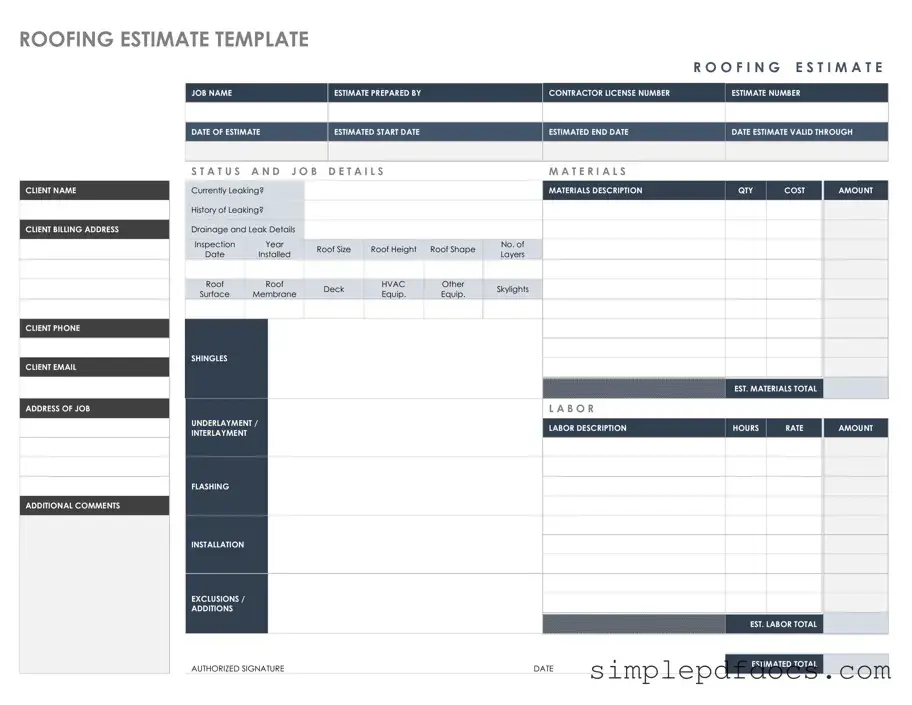When embarking on a roofing project, obtaining a detailed roofing estimate is a crucial first step. This form serves as a comprehensive tool that outlines the scope of work, materials needed, and associated costs. It typically includes sections for the contractor's information, project specifications, and timelines, ensuring that both parties have a clear understanding of expectations. Homeowners can expect to find details about the types of roofing materials to be used, labor costs, and any potential additional fees that may arise during the project. Furthermore, the estimate often incorporates provisions for warranties and guarantees, providing peace of mind for the homeowner. By carefully reviewing this form, individuals can make informed decisions, compare bids from different contractors, and ultimately ensure that their roofing needs are met efficiently and effectively.
